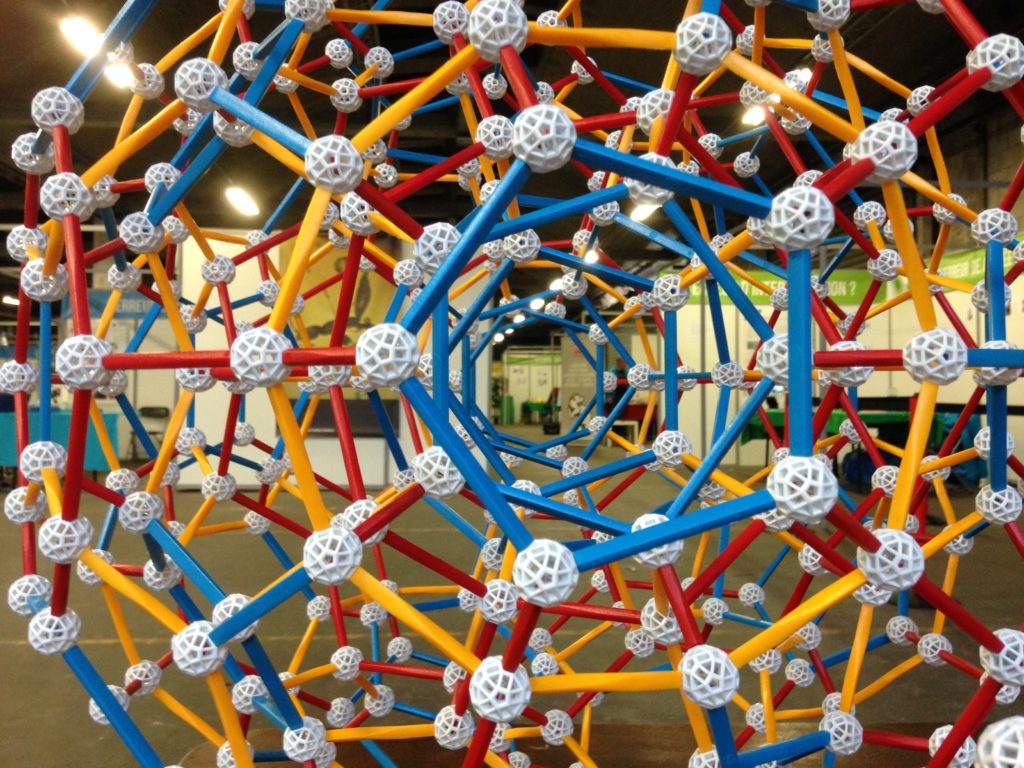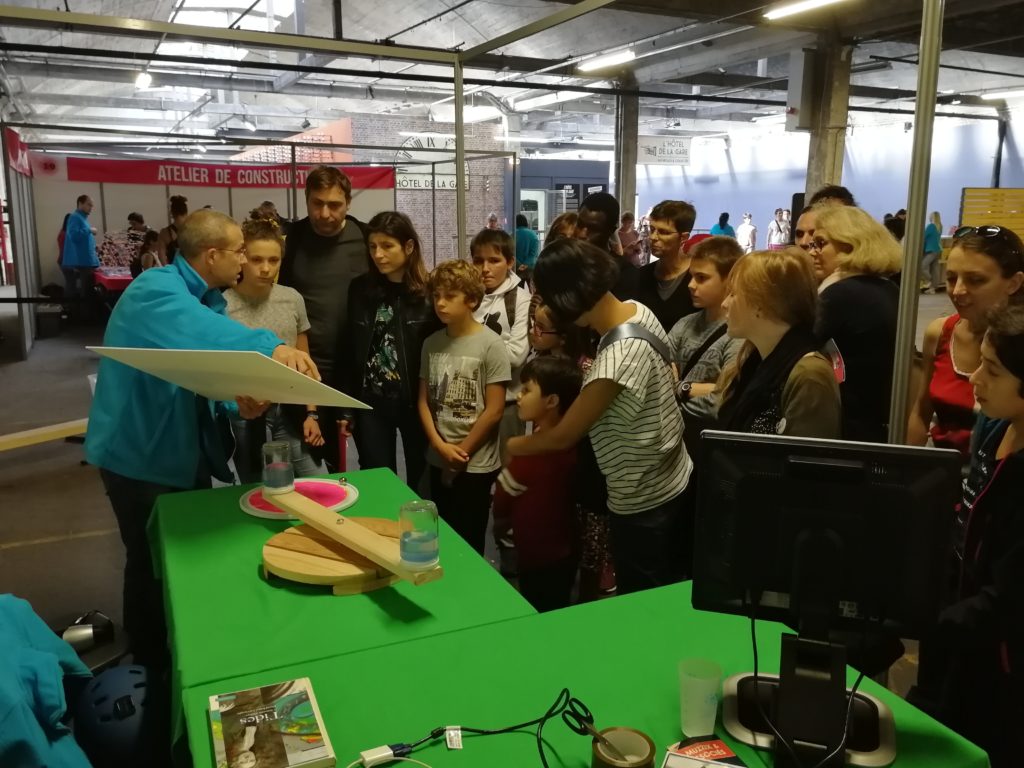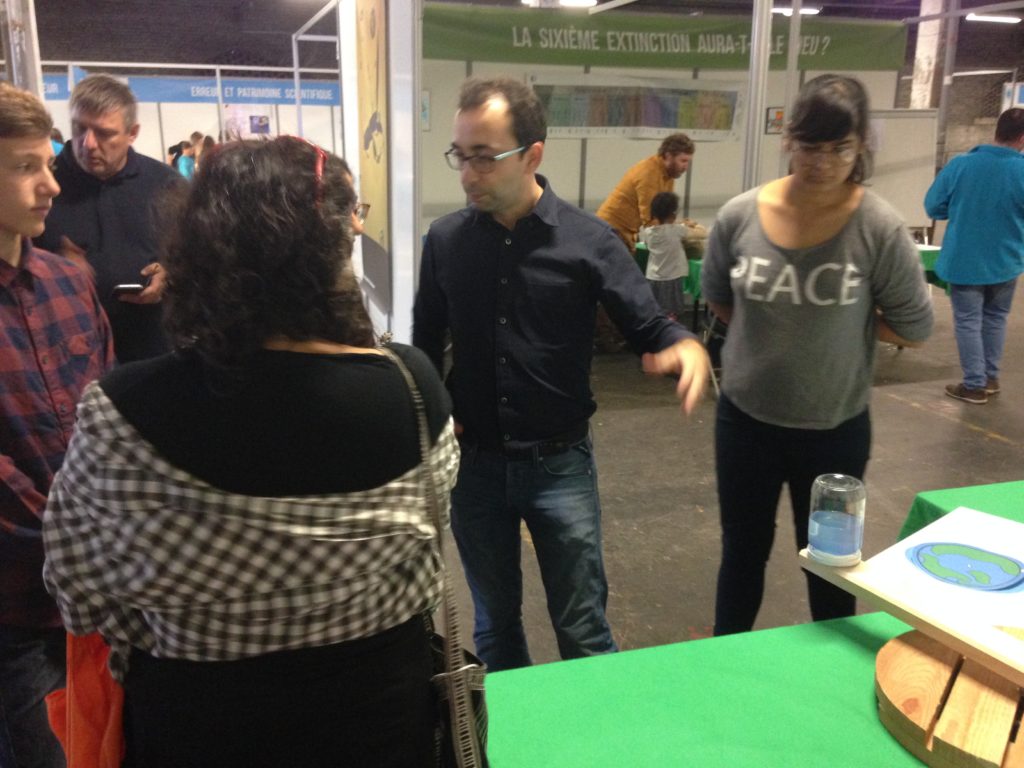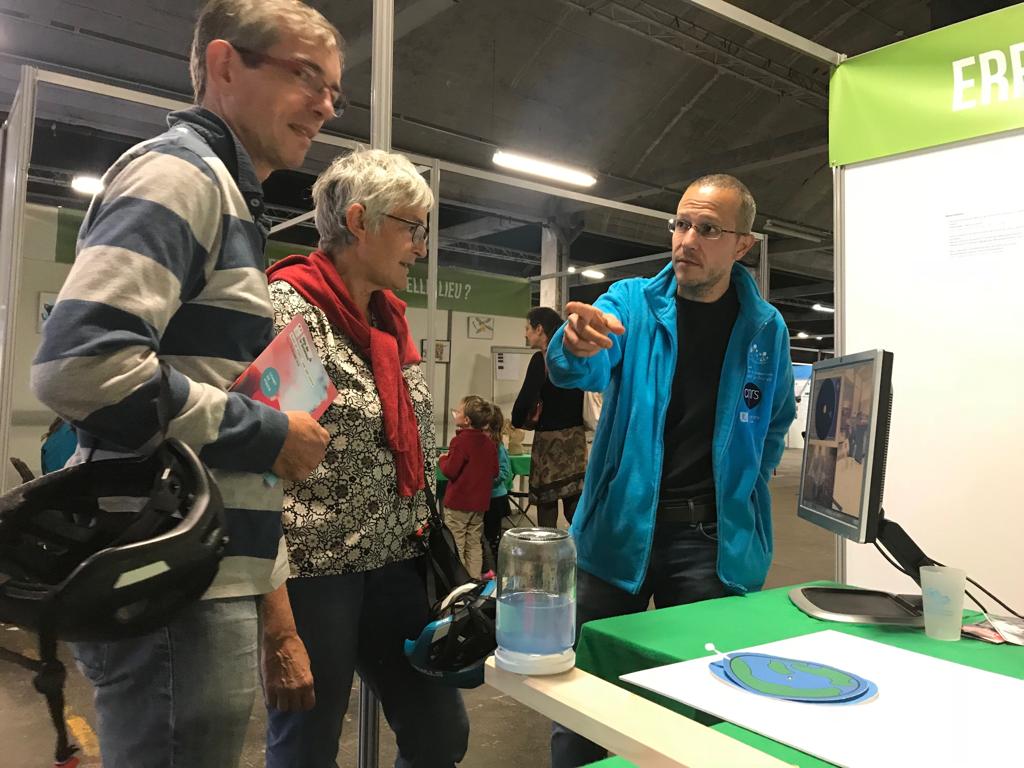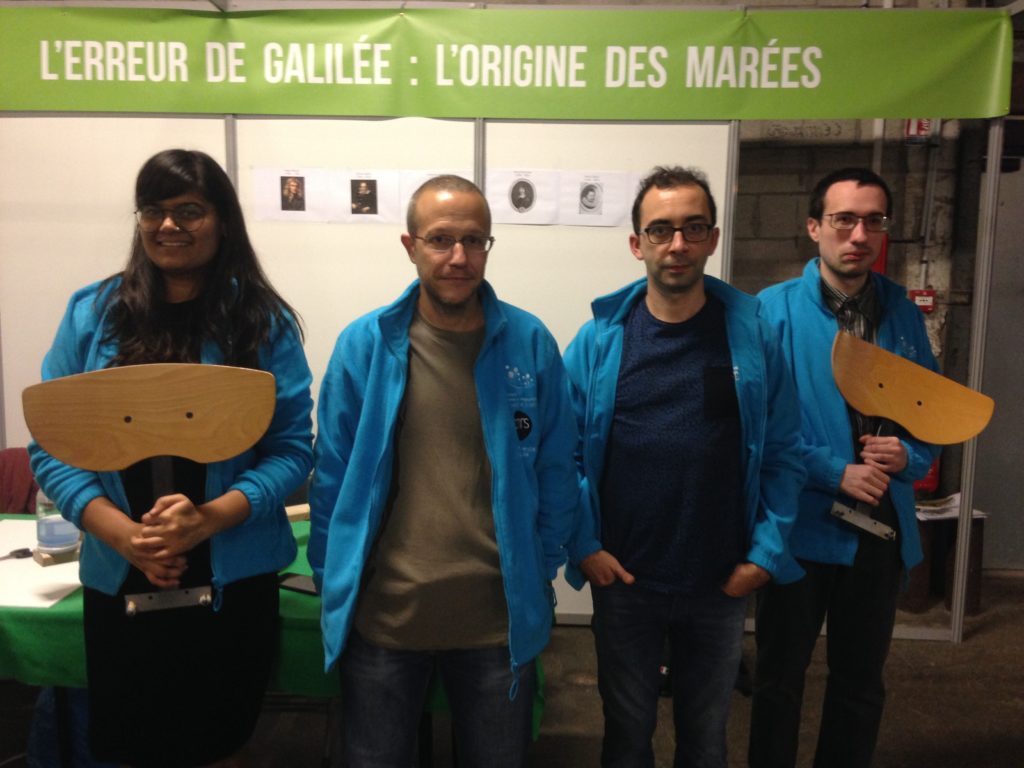COMUE Lille Nord de France, CNRS Nord – Pas de Calais et Picardie, Université de Lille
Gare Saint Sauveur, Lille – October 13 and 14, 2018
Stand L’erreur de Galilée: l’origine des marées
Stefano Berti and Enrico Calzavarini
Tides are variations of the height of seas and oceans. The cycle of rise and fall of seawaters typically takes place twice per day (semidiurnal tide) but, depending on the location on Earth, it can also occur once (diurnal tide), or it can be of mixed type. Tides are complex phenomena. Explaining them has for long time represented a scientific challenge.
Galileo’s explanation was based on innovative concepts for his period. According to him, the tidal cycle was due to the composition of the rotation and revolution movements of Earth. In fact, such movements are responsible of the appearance of forces in the reference frame of Earth, known as fictitious, such as the centrifugal force and Coriolis force. However, this mechanism would give a 12-hour period only for the alternation of high and low tides.
According to the correct explanation, based on the theory of gravitation first developed by Newton, tides are mainly caused by a real physical force, the gravitational attraction (and particularly the reduction of its intensity with distance) exerted by the Moon on the solid Earth and on its oceans. Inertial (or fictitious) forces, even if present, play a secondary role.
Finally, tides also depend on the Sun (they are more or less intense as a function of the alignment of the Moon and the Sun), on the depth of ocean floors and on the shape of the considered basin.
More details in our poster [pdf]
